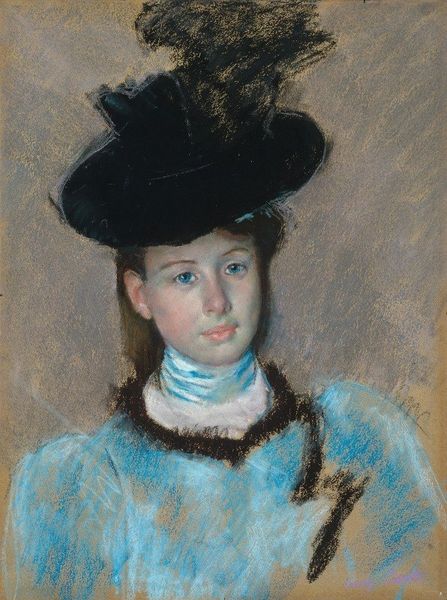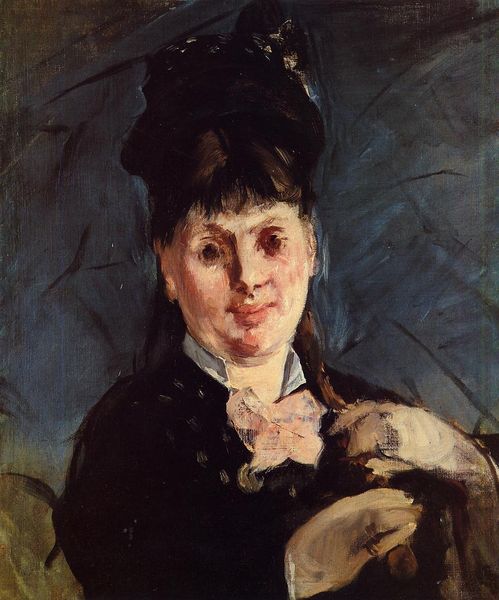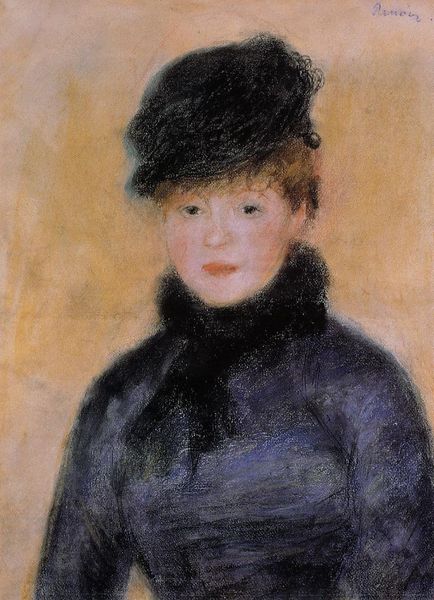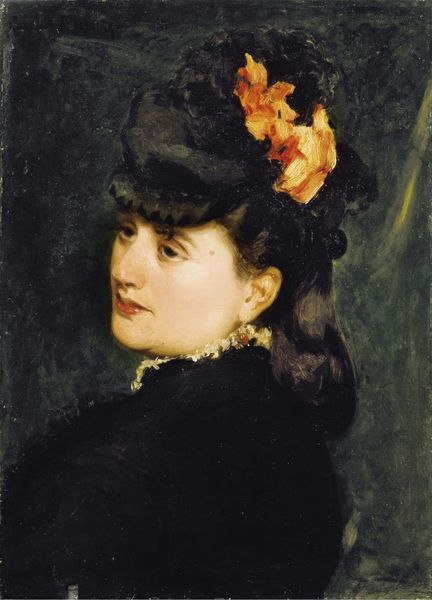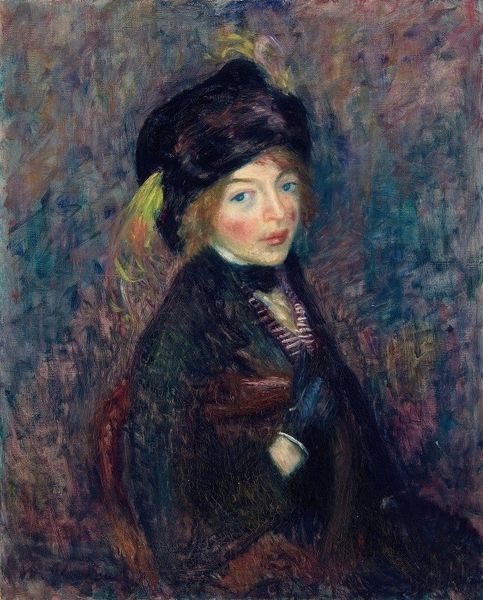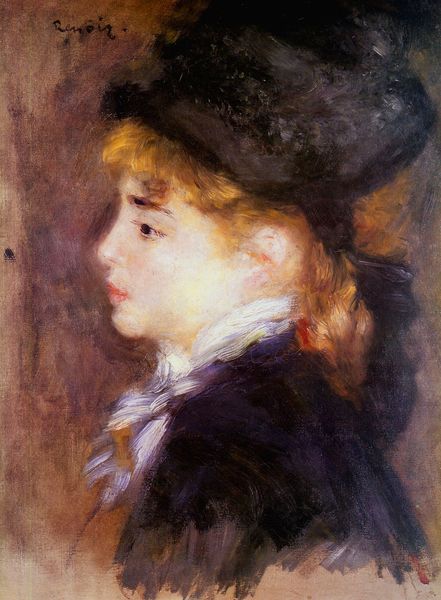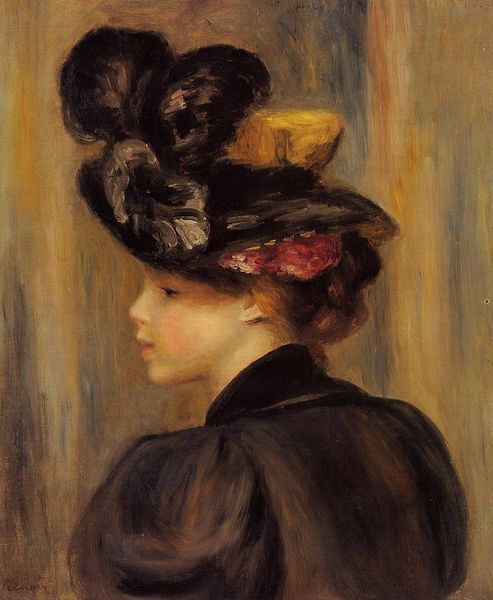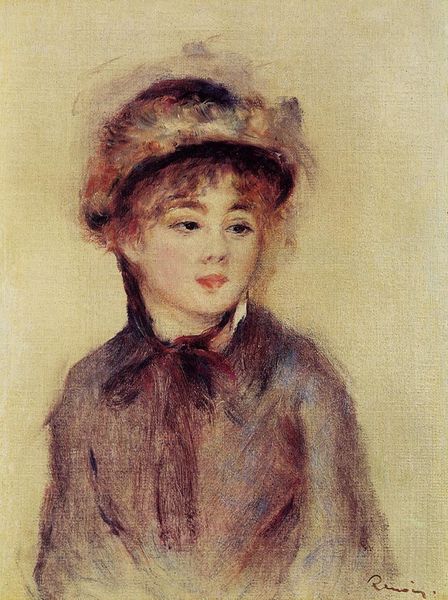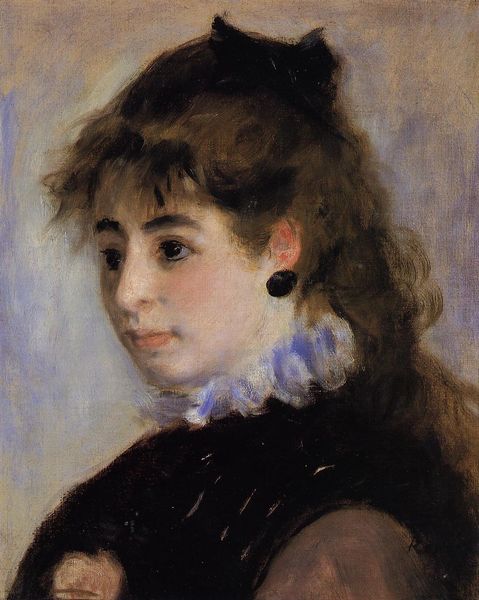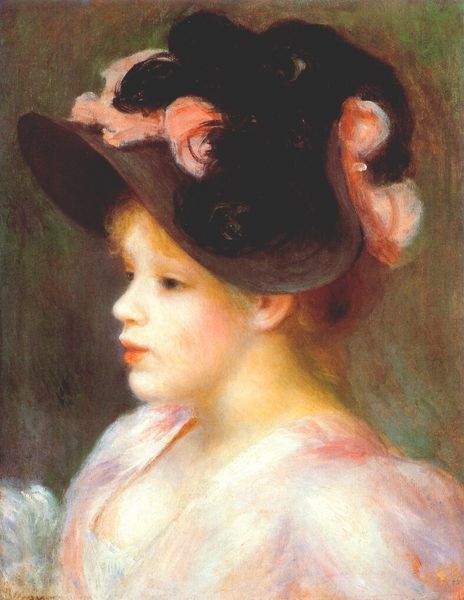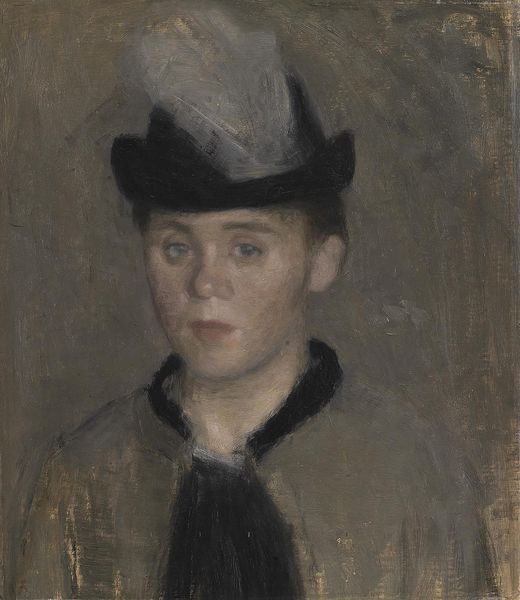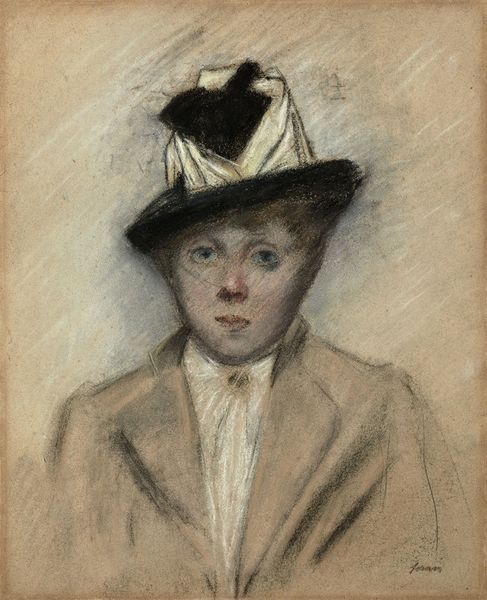
painting, oil-paint
#
portrait
#
painting
#
impressionism
#
oil-paint
#
figuration
Copyright: Public domain
Curator: This is Pierre-Auguste Renoir's "Madame Darras as a Horsewoman," an oil painting dating to 1873. It’s now housed at the Musée d'Orsay in Paris. Editor: She has such a compelling, almost secretive, presence! That black veil and hat give her a touch of mystery. The stark contrast against her skin really pulls you in. Curator: It’s interesting you say "secretive." Considering the context of Renoir’s work and 19th-century French society, a portrait of a woman presented as an equestrian figure signified a certain degree of social freedom and autonomy. This was during a time of increasing social and political mobility. Editor: Absolutely, there's a powerful symbol at play there. The riding attire itself would have been a potent marker of independence. The horsewoman motif connects to classical symbols of triumph and dominion but given that she is a lady we could even suggest agency and independence. What else does Renoir bring to this subject? Curator: Renoir's application of impressionistic techniques brings the modern to an accepted style. It acknowledges academic portraiture while signaling a new artistic style. It allowed the bourgeoisie to accept modernity in portraiture and hang art of 'themselves' on their walls. Editor: Her gaze and expression contribute a sense of determined introspection. It transcends the portrait as a mere depiction. The hat and veil can be interpreted as masks, revealing layers of her personality and societal roles. It creates an interplay between concealment and unveiling. Curator: Indeed, Renoir navigates the tension of portraying a woman both as an individual and as a signifier of her class and aspirations. The artifice is there but the sitter commands attention. The piece demonstrates the rise of public roles for women, particularly in the context of leisure and sport, where social codes were being renegotiated. Editor: Examining her features reminds me that representations of power can come in very subtle packages. In a time defined by grand gestures, Renoir saw potential to portray an era defined by great societal and technological shifts. Curator: Agreed, by presenting her in equestrian attire, Renoir participates in, and possibly critiques, the ways in which women navigated the complex social terrain of 19th-century France. The impressionist aesthetic allows freedom within academic conventions, marking a critical moment in the evolution of societal and artistic norms.
Comments
No comments
Be the first to comment and join the conversation on the ultimate creative platform.
